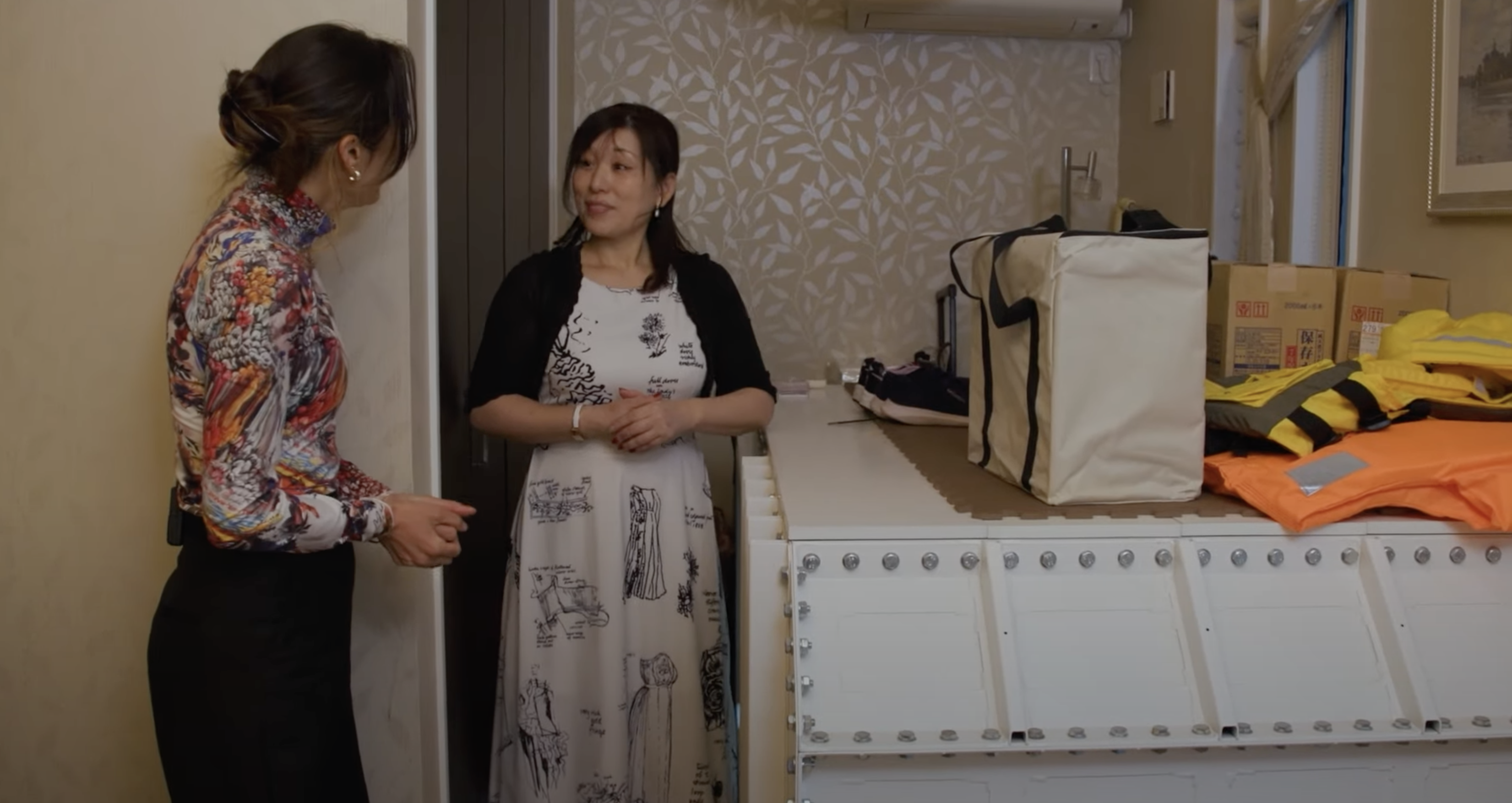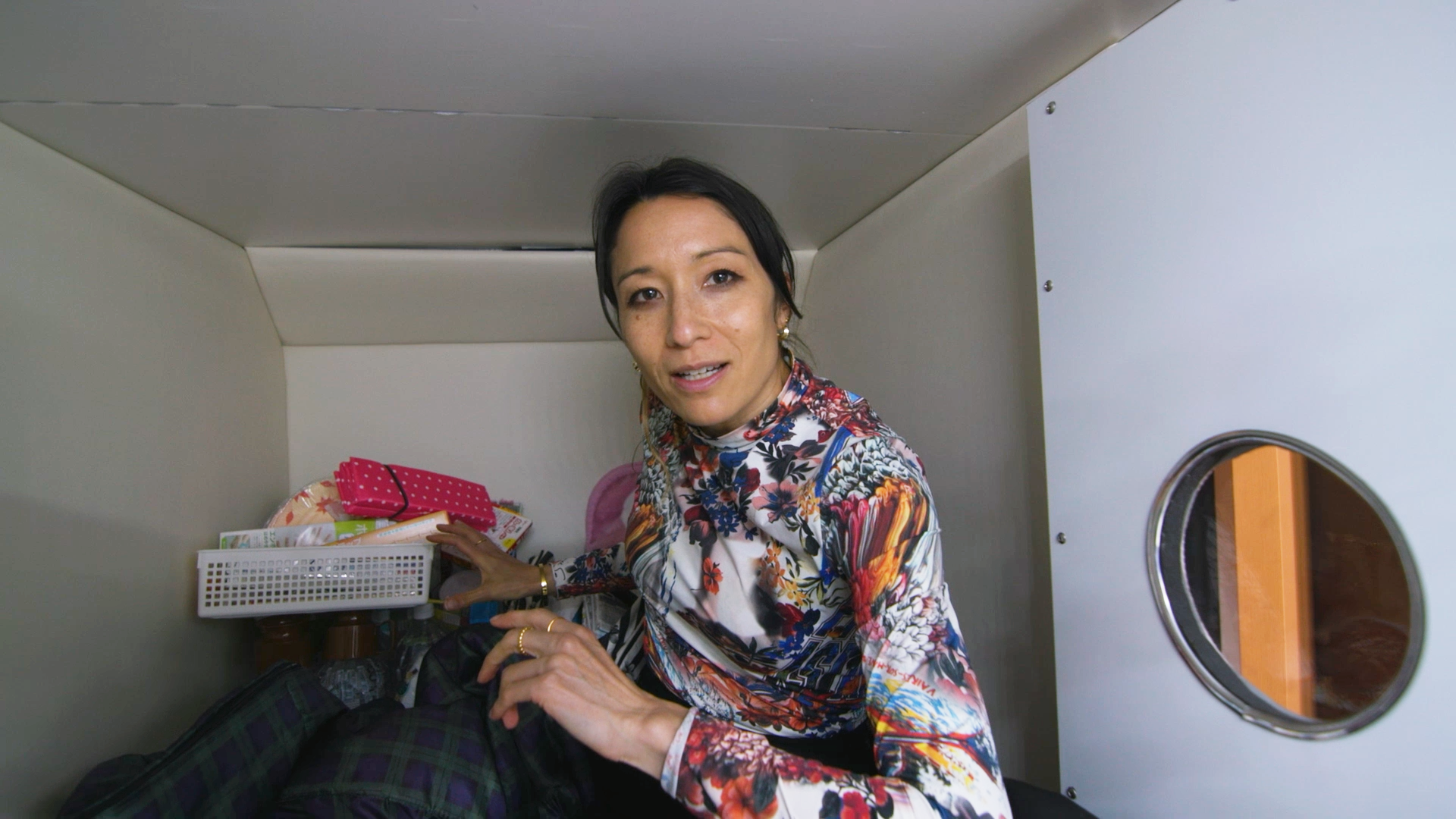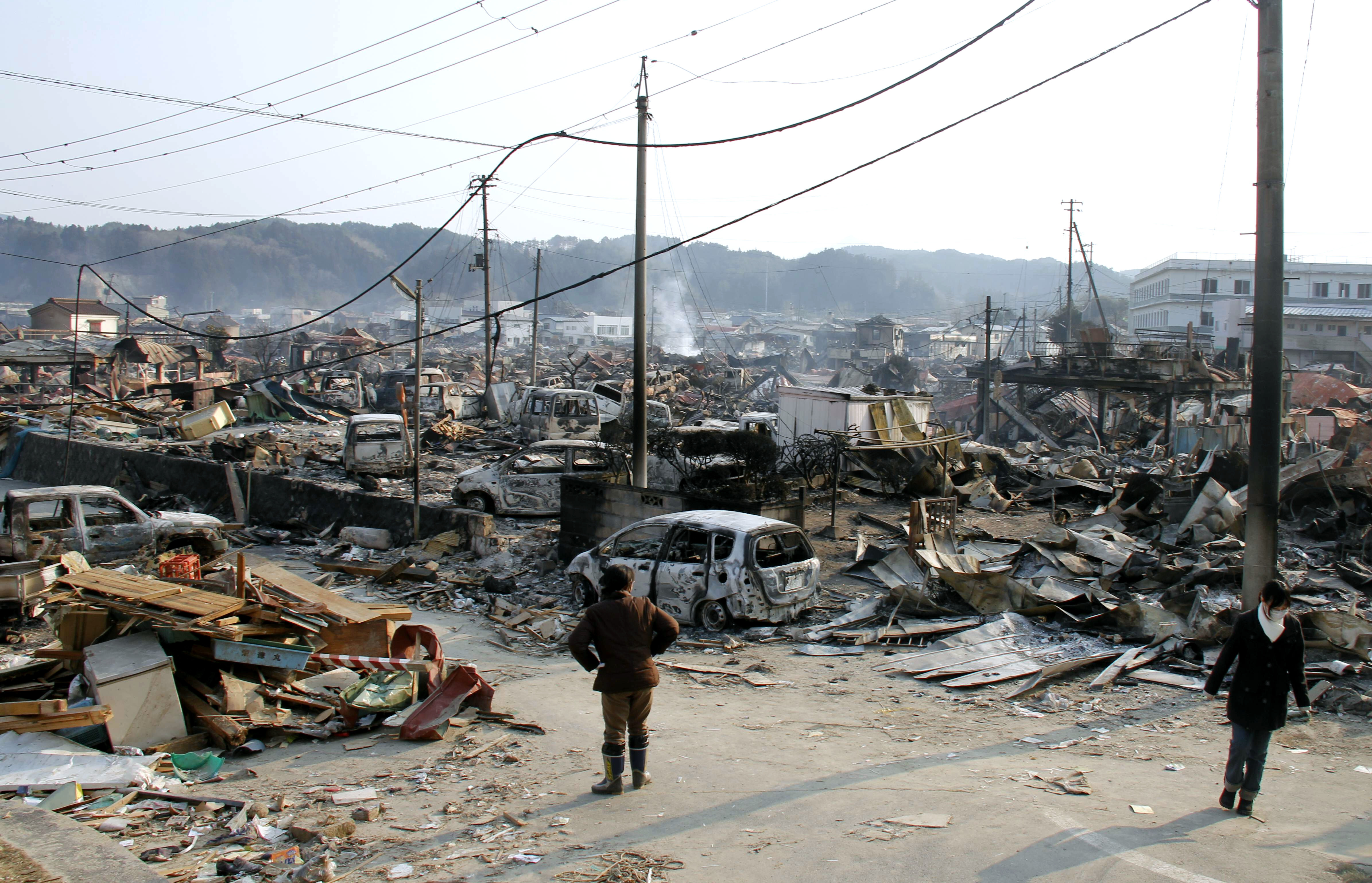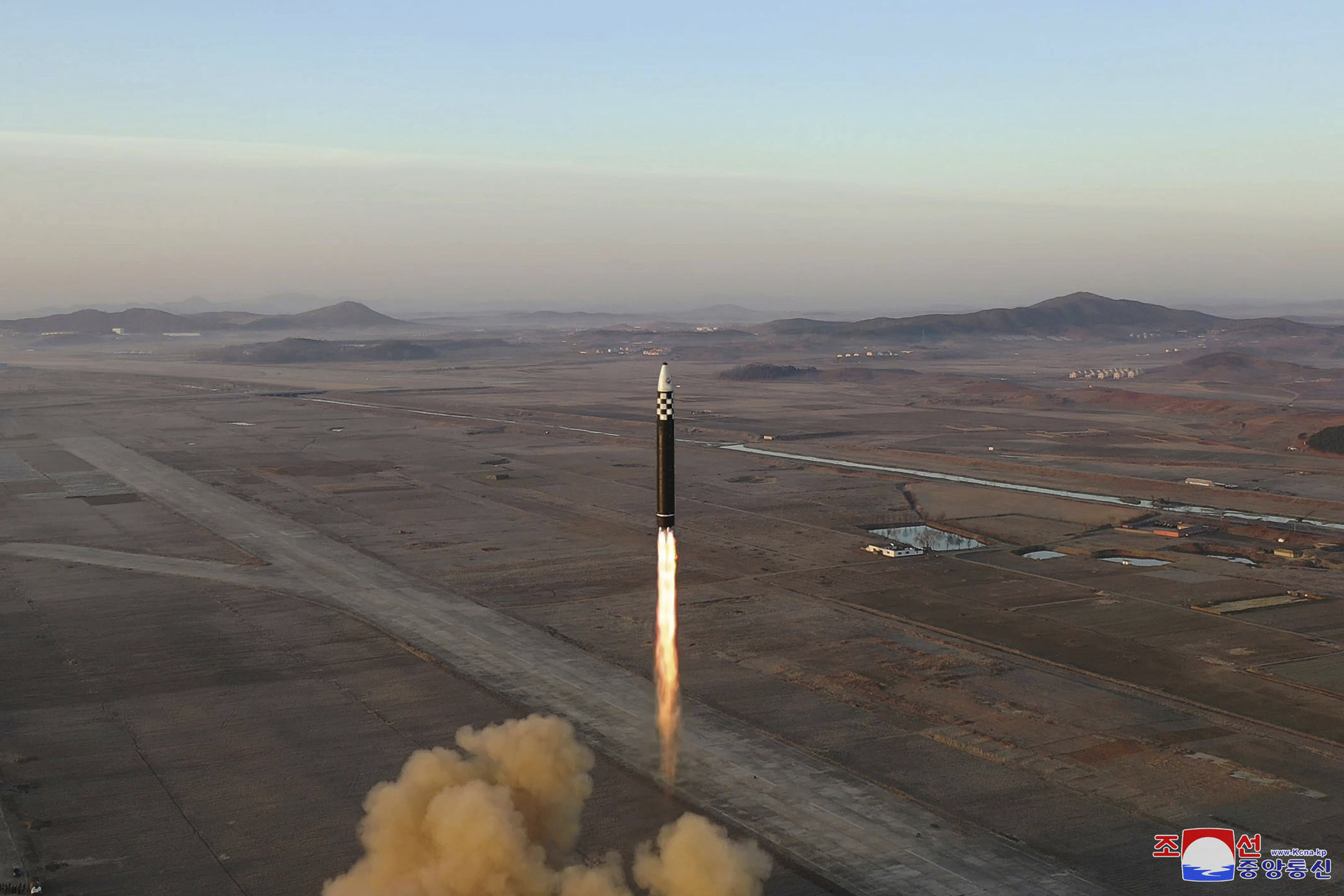It may be the home of Zen, but Japan is one of the most natural disaster-prone places on the planet.
Situated on the boundaries of four tectonic plates and on the Western ridge of the ‘ring of fire’, Japan is one of the most tectonically active places on earth. Its position, topography and climate makes the country particularly vulnerable to earthquakes, tsunamis, typhoons and volcanic eruptions.
While earthquakes are common in Japan, with around 1,500 every year, experts have been predicting that Japan is due for a mega earthquake. Authorities say there’s a 70 per cent chance greater Tokyo will be struck by a 7.3 magnitude earthquake by 2050 - a potential disaster they have termed X Day.
This concern, coupled with fears of an increasing threat of a missile attack from North Korea, has contributed to Japan being a booming market in the $200 billion global disaster preparedness industry.
Parents such as Hiroko are taking extreme measures to protect their families. She installed a shelter into her living room which she hopes will protect her and her young daughter in the case of an emergency.

Hiroko speaks to journalist Kumi Taguchi during Dateline's documentary about prepping in Japan. Credit: SBS Dateline.
“So, it protects us from earthquakes, ballistic missiles and other dangers.”
A shelter like Hiroko’s will set you back about $15,000, with more luxury models priced at hundreds of thousands of dollars.
“We’ve nowhere to hide in this place – we don’t have a basement. So I thought a shelter would be the answer,” she said.
“The air inside is compressed, and there’s enough air for us for two days – that is, if a ballistic missile hits and there’s radiation. After two days, we’ll need to get out."

Journalist Kumi Taguchi inside Hiroko's shelter.
The space is cozy for two people and there’s no toilet - but Hiroko has thought of a contingency plan for that, a purpose-designed disposable waste container which “opens like a paper cup.”
More awareness around prepping
Anxiety about natural disasters increased following the 2011 earthquake that struck off the coast of Fukushima Prefecture.
The Tōhoku earthquake - which registered 9 on the Richter scale - and tsunami eradicated entire towns and villages. More than 19,000 people were killed or are still missing, and more than 6,000 survivors were injured.
This natural disaster also caused the Fukushima Daiichi nuclear accident.

A tsunami survivor stands in a totally devastated town of Yamada in Iwate Prefecture, northern Japan, in 2011, two days after a powerful earthquake and tsunami hit the country's east coast. Credit: AP/Kyodo News
Tadayuki Sato is the head of the Phase Free Association in Tokyo, which provides advice on preparing for disasters.
He told Japanese newspaper Asahi Shimbun his organisation aims to educate people on how to be ready for a disaster before it is imminent.
“I would like people to choose products from the perspective of whether they will help in times of disaster and to share their awareness with others around them,” he said.
“Things that are needed in usual times are needed in times of disaster as well.”
What is the threat from North Korea?
As well as the threat of natural disaster, many Japanese are worried about a potential missile attack from North Korea.
North Korea has fired many strategic missile tests since its first one in 1984.
In 2022, North Korea fired more than 90 missiles, the most ever in a single year.
The latest test occurred last week, just hours before the leaders of South Korea and Japan met at a summit in Tokyo. North Korea launched a long-range ballistic missile into the waters off the east coast of the Korean Peninsula.

This photo provided by the North Korean government shows what it says is an intercontinental ballistic missile in a launching drill at the Sunan international airport in Pyongyang, North Korea, Thursday, March 16 2023. The content of this image is as provided and cannot be independently verified. Credit: AP/Korean Central News Agency
Japanese Prime Minister Fumio Kishida and South Korean President Yoon Suk-yeol said the summit was a significant first step toward rebuilding ties between the two nations after more than a decade of pause on bilateral relations due to historical divisions.
They stressed the importance of improved ties, following shared concerns, including escalating North Korean nuclear and missile threats.
According to CNN, before departing for Tokyo, Yoon told international media “there is an increasing need for Korea and Japan to cooperate in this time of a polycrisis.
“We cannot afford to waste time while leaving strained Korea-Japan relations unattended.”
Tokyo’s X Day
Naoshi Hirata is an emeritus professor of seismology at the University of Tokyo. He was part of the Tokyo metropolitan government's panel of experts on disaster prevention that produced the official estimate of the X Day earthquake.
He worries Tokyo’s residents are unprepared.
"Not all the people, all the residents, think very seriously about this," Professor Hirata told the ABC.
With this in mind, the Tokyo metropolitan government has produced a 300 page guide, which includes manga images, to help residents get ready.
We’ve nowhere to hide in this place – we don’t have a basement. So I thought a shelter would be the answer.Hiroko
It has also incorporated ‘refuge parks’ into its urban planning which double as survival hubs in case of a disaster. The United Nations Office for the Coordination of Human Affairs warns the first 72 hours after a disaster are the most crucial to save lives.
The Guardian says these parks are fitted with solar-powered charging stations, public benches which turn into cooking stoves, and manholes which also act as emergency toilets. Underground are water reservoirs and storehouses containing food for entire districts.
For Hiroko, she says she often gets asked why she bought her living room bunker.
“I’m really happy that I did,” she said.
“When something happens, it would save us.”



